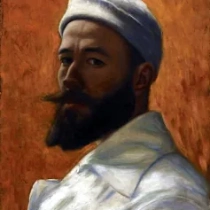 1873 - 1917
symbolism
1873 - 1917
symbolism
Description Hugo Simberg
Hugo Simberg, born on June 24, 1873, in Hamina, Finland, emerged as a visionary symbolist painter and graphic artist, leaving an indelible mark on the Nordic art scene. Simberg's life unfolded against the backdrop of Finland's journey towards independence, and his art reflected both the cultural currents of his time and his deeply personal and fantastical imagination.
Simberg's artistic journey began at the Finnish Art Society Drawing School in Helsinki, where he honed his skills and explored various styles. His early works, influenced by the symbolism movement, already hinted at his inclination towards the mystical and otherworldly.
A pivotal moment in Simberg's career came with the creation of "The Wounded Angel" in 1903, a haunting masterpiece that encapsulates his fascination with the intersection of life, death, and the supernatural. The painting, often considered an allegory for the fragility of human existence, exemplified Simberg's unique blend of symbolism and a distinctive Finnish sensibility.
Simberg's art delved into the realms of folklore and mythology, capturing the essence of the Finnish national spirit. His depictions of mythical creatures, such as trolls and winged serpents, demonstrated a deep connection to Finland's rich cultural heritage and a desire to explore the mystical dimensions of life.
Despite battling health issues, including tuberculosis, Simberg continued to produce a prolific body of work. His diverse oeuvre included landscapes, portraits, and illustrations. The theme of death, often portrayed with a poignant beauty, permeated his art, reflecting his philosophical contemplation of mortality.
Hugo Simberg's legacy extended beyond painting. His contributions to graphic arts, including book illustrations and designs for stained glass windows, showcased his versatility. Simberg's involvement with the Finnish national epic, the Kalevala, further solidified his role in shaping Finland's cultural narrative.
Simberg passed away on July 12, 1917, just a few months before Finland declared independence. His art, imbued with a unique blend of symbolism and Finnish mysticism, endures as a testament to his imaginative brilliance. Simberg's ability to evoke emotions and provoke contemplation through his enigmatic and ethereal creations secures his place as a visionary in the pantheon of Finnish art.
Gallery
Paintings Hugo Simberg
F.A.Q Section
"The Wounded Angel" (1903): A poignant and iconic painting depicting an angel with bandaged eyes being led by two young boys.
"The Garden of Death" (1896): A surreal and symbolic composition exploring themes of mortality and the afterlife.
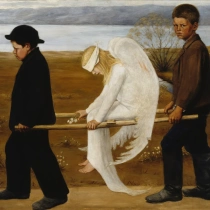
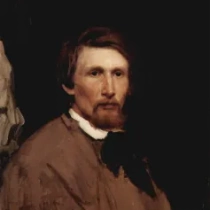
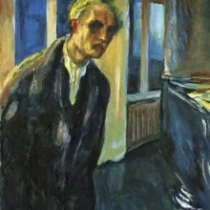
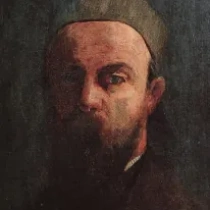
No Comments Yet...